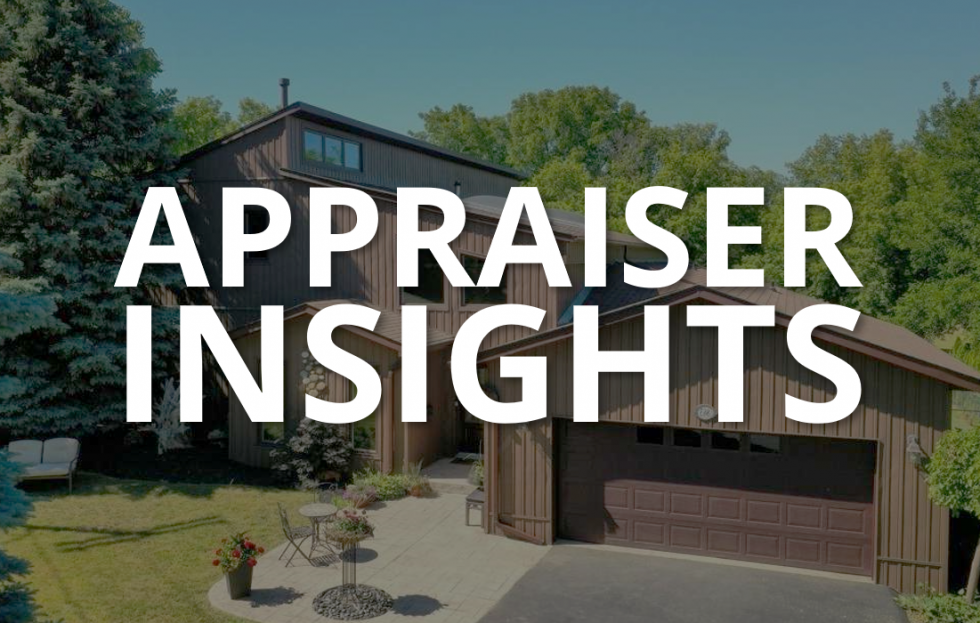Where data, experience and insight meet
In previous posts, we’ve talked about how appraisers use data and comparable sales in order to arrive at a valuation for properties. For residential properties, comparable sales tend to offer a good starting point: If four similar properties on the street have sold in the past few months, they provide a good indication of what your home is worth.
But sometimes, you’ll see two homes in the same neighbourhood that seem, on the surface, to be quite similar with the same size, age, lot size, etc. – and yet they’ll have quite different valuations.
What is the appraiser seeing that the ‘average’ observer may not?
Appraisers use a combination of data and insights to arrive at a valuation. Some of that data is gleaned from sources that the average homeowner doesn’t check, such as property records (for lot sizes, easements and rights-of-way), zoning restrictions, environmental and soil reports, etc. In this way, a 3-bed bungalow sitting on land which has commercial zoning may have a completely different valuation than the exact same model of home 2 blocks away which is on land with single-family residential zoning – but that wouldn’t necessarily be obvious to a casual observer of the neighbourhood.
Insights based on knowledge and experience
Then there are the harder-to-quantify elements that have a definite effect on value but which require the appraiser’s judgement to assess correctly.
These include:
- The effects of deferred maintenance (leaking roof, cracked foundation) on what a typical purchaser might be willing to pay for a property (compared to what they’d pay for a property that is move-in ready)
- Differences in rights-of-way or easements, given standards and norms for the area
- Usable square footage of the lot (especially if part of the lot is steep, rocky, in a flood plain, etc.)
- Privacy (is the property overlooked by a large condo or apartment building)
- Projected future development (the property with commercial zoning may be perceived as having more value due to future potential)
- Environmental concerns (known soil remediation issues, flood data, etc.)
- Undesirable neighbours (the property is next door to an unkempt property or a frat house with multiple noise complaints, for example)
- Better or worse school catchment area than a comparable property just a couple of blocks away
- Possible asbestos insulation or lead paint that needs to be removed (this isn’t always obvious)
- Differences in utilities and services (poor or non-existent high-speed internet access can have an effect on value, for example)
Appraisers have to use their judgement in these situations: For example, a property where the back yard is on a steep hill may be perceived as more valuable if the hill descends to a nature trail or picturesque creek; less valuable if the hill ascends to a commercial area which reduces the backyard’s privacy.
What does this mean for homeowners?
It’s important to keep these factors in mind when you’re looking at an appraisal report on a property you’re buying, selling or holding on to and find yourself a little surprised by the valuation provided. (And it’s worth noting that, especially on higher-value properties, different appraisers can quite legitimately arrive at slightly different values.)
But you’re allowed to ask questions. If you’ve received an appraisal report that doesn’t make sense to you, or which seems to have left out information you thought was important, you can ask for clarification. (If a financial institution ordered and paid for the appraisal, you should go through them to speak to the appraiser.)
And as always, don’t hesitate to let us know if you’d like more information about this subject or appraisals in general!


